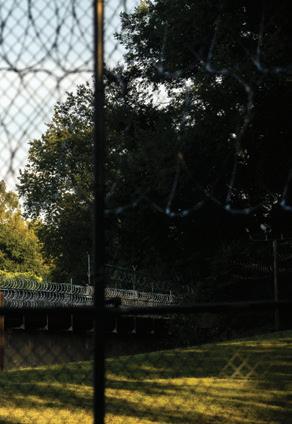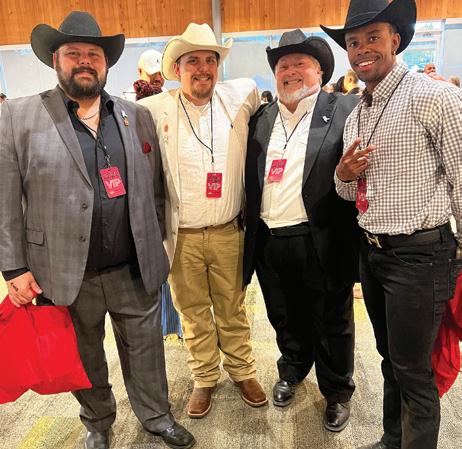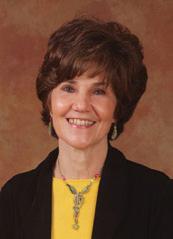









Since 2023, kids as young as 13 have been held in solitary confinement for weeks or months inside the county’s juvenile detention center.















































































































































































SHARA CLARK Editor-in-Chief
ABIGAIL MORICI Managing Editor
JACKSON BAKER, BRUCE VANWYNGARDEN Senior Editors
TOBY SELLS Associate Editor
KAILYNN JOHNSON News Reporter
CHRIS MCCOY Film and TV Editor
ALEX GREENE Music Editor
MICHAEL DONAHUE, JON W. SPARKS Staff Writers
JESSE DAVIS, GENE GARD, WILLIAM GROSS, EMILY GUENTHER, COCO JUNE, PATRICIA LOCKHART, FRANK MURTAUGH, KATIE STEPHENSON Contributing Columnists
SHARON BROWN, AIMEE STIEGEMEYER Grizzlies Reporters
CARRIE BEASLEY Senior Art Director
CHRISTOPHER MYERS Advertising Art Director
NEIL WILLIAMS Graphic Designer
KELLI DEWITT, CHIP GOOGE, SHAUNE MCGHEE, KINSEY THOMPSON Senior Account Executives
CHET HASTINGS
Warehouse and Delivery Manager
JANICE GRISSOM ELLISON, KAREN MILAM, DON MYNATT, TAMMY NASH, RANDY ROTZ, LEWIS TAYLOR, WILLIAM WIDEMAN Distribution
KENNETH NEILL Founding Publisher
THE MEMPHIS FLYER is published weekly by Contemporary Media, Inc., P.O. Box 1738, Memphis, TN 38101
Phone: (901) 521-9000 Fax: (901) 521-0129 memphisflyer.com
CONTEMPORARY MEDIA, INC.
ANNA TRAVERSE
Chief Executive Officer
LYNN SPARAGOWSKI
Controller/Circulation Manager
JEFFREY GOLDBERG Chief Revenue Officer
MARGIE NEAL
Chief Operating Officer
KRISTIN PAWLOWSKI Digital Services Director
Since 2023, kids as young as 13 have been held in solitary confinement for weeks or months inside the county’s juvenile detention center.
PHOTO: KEVIN WURM / MLK50 / CATCHLIGHT LOCAL / REPORT FOR AMERICA



Joe Restivo leans on the people he loves to honor the soul of classic jazz. p18
PHOTO: ANDREW TRENT FLEMING
Hadley Hury’s new novel finds transformation in all the right places. p24





NEWS & OPINION THE FLY-BY - 4 POLITICS - 7 FINANCE - 9 AT LARGE - 10
COVER STORY
“JUVENILE INJUSTICE” BY REBECCA CADENHEAD, MLK50: JUSTICE THROUGH JOURNALISM - 12 ARTS & ENTERTAINMENT
WE RECOMMEND - 17
MUSIC - 18 AFTER DARK - 19
CALENDAR - 20
NY TIMES CROSSWORD - 21
WE SAW YOU - 22
BOOKS - 24
FOOD - 25
NEWS OF THE WEIRD - 26 ASTROLOGY - 27 TV - 28
CLASSIFIEDS - 30 LAST WORD - 31
Memphis on the internet.
Right here last week, we reported that a TikTok post by DeeDee Manning was blowing up. In it, she thanked Donald Trump and the Memphis Safe Task Force.


Since then, Manning claimed she was red from the Tri-State Defender (writing under the name Dalisia Ballinger) because of her views, sharing the story with conservative talk show host Todd Starnes on Newsmax, for example.
Defender editor Stephanie Jones issued a statement on Facebook late last week that said, “ is is not true.” Manning, she said, was a freelancer for the newspaper and could “not be red from a job she didn’t have.”
“Every journalist with integrity and an ethical foundation knows that you cannot report facts and then share your personal opinion with the masses on what you’re covering,” Jones wrote.
Further, Jones said she le it up to Manning on how to proceed. She chose the “option of leaning into the publicity her social media post had garnered over her commitment to cover the Memphis Safe Task Force.”
Memphis showed up for the second No Kings rally at Poplar and Highland Saturday. ere were signs (Stop Pretending Your Racism is Patriotism!), in atable costumes (including a Baby Trump), and tons of speeches.

Edited by Toby Sells
By Flyer staff
Force arrests pile up, arrests based on “how you look,” and Shelby leads on rearm deaths.
Tennessee Governor Bill Lee said last week the crime- ghting “surge” of state and federal o cers in Memphis will be a long-term e ort.
At a press conference, Lee said the operation’s success will be measured by the reduction of violent crime but gave no speci c targets.
“We do know this is going to last for months, and we have just begun. In fact, I will tell you that it will last forever,” Lee said.

Lee said the number of o cers “will diminish at some point” but that e orts between local, state, and federal authorities will continue in some form in perpetuity.
“It’ll just change in its scope as we execute through the mission,” Lee said.
e Department of Justice released gures to Action News 5 last week showing 803 total arrests from September 29th through October 12th. More than half of those arrests were for outstanding warrants or deemed administrative, which has meant immigration violations in the past. An outstanding warrant could be for a range of legal violations, such as a missed probation appointment.
Shelby County Mayor Lee Harris announced a state of emergency last week, citing a strain on local resources caused by the surge in federal and state law enforcement deployed to Memphis by Lee and President Donald Trump.
Lee said last week that the Memphis Safe Task Force is focused on violent crime, and that the coalition of 31 agencies has already arrested “850 violent criminals and known gang members.”
But a look at the task force’s operations by MLK50: Justice rough Journalism showed that most of the people arrested were not charged with a violent crime, and immigrants are being arrested on administrative — not criminal — warrants.
Harris said last week his o ce is weighing legal action to
stop “unconstitutional actions” of the Memphis Safe Task Force against the county’s Latino community.
Leaders said residents are getting stopped by law enforcement o cials for “the way you look” with long tra c stops that can end with o cers refusing to give back identi cation cards, like driver’s licenses. Some have been taken to 201 Poplar on hold for Immigration and Customs Enforcement (ICE) and later sent to immigration detention centers for hearings.
Harris said, based on the task force data, most of the arrests made here so far have been on outstanding criminal warrants. e second most are related to immigration violations.
Leaders said last week they worried those immigration arrests begin with stops based on racial pro ling. Harris said one Shelby County employee was pulled over by the task force for no reason. He was made to produce his identi cation papers and was later let go. e employee was given no reason for why he was pulled over and could only guess that it was because he looked Latino.
Shelby County led the state of Tennessee in rearm deaths by county from 2019 to 2023, with a reported 1,849 rearm deaths. Gun deaths in Tennessee hit a record high in 2023 with a total of 1,587 rearm fatalities. e state ranks seventh in the nation for overall gun deaths.
Tennessee Lookout and MLK50: Justice rough Journalism contributed to this report.
Visit the News Blog at memphis yer.com for fuller versions of these stories and more local news.














By Kailynn Johnson
To avoid losing funding, library pulls diversity program, changes books on display.
Executive orders from the state and federal administrations have a ected Memphis Public Libraries operations and displays. City o cials said the changes have been implemented out of concern for federal nancial backing.
Two weeks ago, community members questioned empty displays at Memphis Public Libraries locations. ese empty displays coincided with the observance of Banned Books Week around the country.
A spokesperson for the city of Memphis con rmed that the displays were removed as the city “revamps” the approval process to have more “consistent display strategies across” their 18 locations.
e city said in a statement: “Our management team has been working closely with sta to implement the new policy as quickly as possible, as the empty displays have raised questions. is new process marks a change for sta , as it is the rst time we’ve required regional manager approval for department and branch displays.
“We’ll continue working with our team to help them understand the importance
of the new policy. At the Benjamin L. Hooks Central Library, displays are back up. ere will be no further comment on library operations.”
One library manager said they have not been given any speci c guidance on what to say to patrons who inquire about displays. Sta were asked to simply tell the community that they are “revamping the book display procedures.”
“Revamping would be along the lines of ‘Oh, there’s a better way to do it. Maybe we could do the same theme all across the building,’ — those types of things,” the manager said. “Telling [patrons] that it’s revamping is very obscure and comes very close to telling us point-blank to lie.”
e manager said they and other library sta are public servants and take that duty seriously.
“What we’re concerned about is that the citizens of Memphis have as much access as possible to information — including displays, including programming,” the library manager said. “If they don’t, democracy is weakened.”
e Flyer obtained a recording of an October 3rd meeting between city and
library sta regarding state and federal executive orders.
“Trump’s executive order prohibits DEI in the workplace,” Chris Allen, human resource compliance o cer for the city, said in the recording. “Essentially any facilities or resources that appear to prohibit all are considered discriminatory, even if it says it’s open to all.”
In an email from the city’s human resources department, library sta were made aware of Attorney General Pam Bondi’s memo to all federal agencies.
e memo referenced an executive order issued by President Donald Trump on January 20, 2025, which prohibited diversity, equity, and inclusion (DEI) practices in the workplace. e email also referenced Tennessee House Bill 0622, which implements a similar policy.
Allen said that because the city receives federal funding, it must comply with executive orders. is means that the city, along with library branches, could be investigated to see if they are compliant.
Allen said the city has received complaints about the library, and anything

they post could be sent to a compliance o cer.
While the libraries do not function solely on federal funding, Allen added that a “chunk” of this funding is used to pay employees. Allen asked sta to “support the approval process, even if they don’t agree.”
Library sta could be “reprimanded, up to and including termination,” for failure to comply, Allen said.
e city did not respond for comment as of press time.




A storm ensues from the denial of Congressman Cohen from a speaking role at the No Kings rally.

Indivisible Memphis, the local advocacy group that organized the well-attended No Kings rally on Saturday, now finds itself at the center of a highly divisive flap stemming from the fact that 9th District Congressman Steve Cohen was not allowed to speak at the anti-Trump event, while his declared Democratic primary opponent, state Representative Justin J. Pearson, was.
Literally thousands of words have by now been expended by Cohen, by spokespersons for Indivisible, and by numerous other commenters as an online war of words has been waged over the matter.
“I was not asked to speak,” said Cohen in one of several Facebook posts — even after he specifically implored Indivisible Memphis for the opportunity. He said he knew “some of their leaders are supporting my opponent,”
Pearson, who, Cohen said, was listed as the chief of seven speakers, “all the way down to the general sessions clerk and another former intern who’s not an office holder.”
When Cohen “saw Justin Pearson on MSNBC saying he was gonna speak,” he decided it was only proper that he should speak as well. He said he called Indivisible eight days in advance, “and I never got a return phone call. … That’s the full story and then when I was there, they could’ve had me on as the general sessions clerk [Tami Sawyer] decided not to come” for security reasons. “They had a spot open [and] had plenty of time and they didn’t start till late and they could’ve called on me [but] they didn’t. … They didn’t even recognize that I was there, which is kind of customary [for a] public official and the congressman involved with trying to impeach Trump the king.”
(This last was a reference to numerous previous actions of Cohen in offering serious concrete resistance to actions of the Trump administration.)
In responding, Indivisible has countered that, among other things, Cohen had declined several previous invitations from the group to address its events.
The congressman has denied that, saying there had been only one prior invitation from Indivisible, which he had been unable to accept because of pending government business.
In any event, whether by intended snub or by inadvertence or accident, the resultant uproar is bound to have an impact on how local Democrats decide on whom to support in what will henceforth be an even more closely followed primary race than before.
• Lamar Alexander, the former Tennessee governor and U.S. Senator who also served a term as U.S. secretary of education, has weighed in against President Donald Trump’s push for a higher education compact with the federal government.
“I have always believed that the Republican Party exists to stop such
Washington meddling,” Alexander, a Republican, wrote in an op-ed in The Wall Street Journal. “[T]he federal government shouldn’t try to manage the nation’s 6,000 colleges and universities.” Alexander serves as a trustee of Vanderbilt University in Nashville, one of nine universities that recently received an offer to accept the compact by the Trump administration.
The proposal would require schools to remove factors like sex and ethnicity from admissions and to define gender “according to reproductive function and biological processes.” It would also commit the schools to do away with “institutional units that purposefully punish, belittle, and even spark violence against conservative ideas.”
Alexander said Republicans “should remember what it means to be Reagan’s heirs and stop acting like Democrats whose mission is to tell everyone what to do from Washington. … One day Democrats will be back in charge and Republicans won’t like what they tell colleges to do.”



SATURDAYS IN NOVEMBER & DECEMBER | 6PM – 10PM




SATURDAY, NOVEMBER 29 | 10PM & SATURDAY, DECEMBER 27 | 10PM





























































































































































































































































































































FOOD TRUCKS SHOPPING
LIGHT SHOW GAMES
LIVE CONCERT












SANTA CARRiAGE RiDES LIGHTING OF THE TREE AND MORE!
























































































































What to consider before making a loan to a loved one.
“My loved one is in debt and asked for my help in paying it off. What should I do?” At Creative Planning, we run into this question often, as family and finances are so frequently interconnected with one another. When it comes to deciding a course of action, oftentimes there’s not one clear and obvious answer. Before making a financial commitment to help a loved one, be sure to consider the following.
What are the alternatives?
Before volunteering your own funds, a positive first step is to understand if there are there any other ways to help your loved one clear up their debt. If it’s reached a point where it has destroyed your loved one’s credit rating, it could make sense to have it written off by declaring bankruptcy. Or perhaps you can help your loved one find a debt management program or pursue a debt settlement arrangement. Depending on the circumstances, there may be other ways to help your loved one gain financial footing that don’t require a check from you.
Your loan may be just one part of their total “loan portfolio.”
How will the money be used?
If alternatives fail to produce a viable solution, before committing your funds, it’s best to understand how the current or new debt may be impacting your loved one’s situation. As the potential lender, it’s natural to question the borrower’s previous financial decisions. Practically, you (as the lender) may not view paying off an auto loan as prudent; however, there may be more common ground around paying off an outstanding medical or educational debt. Having clarity regarding how the loan is to be used may help to overcome emotions and objections around providing a loan. Whether the loan helps to free one from their debt burden or enable a new venture, the purpose of the loan should be clearly defined. If servicing existing debt, it may be wise to ensure any money you lend is being used to pay off principal, which will have a greater impact on your loved one’s overall financial health.
What are the specific terms of the loan?
Just as you would with any other borrower, have your loved one agree to the loan’s terms in writing before you issue a check. While this may seem harsh, it’s an important step to help ensure there are no
misunderstandings or resentments down the road. Your loan agreement should include the following:
• The amount you’re lending
• The time frame in which the loan will be repaid
• Any agreed-upon interest, if applicable
• The amount and frequency of payments, if applicable
Keep in mind that loans over a certain threshold amount may be viewed by the IRS as taxable gifts if not repaid in full. One way to avoid tax liabilities is to charge interest and require regular payments.
What is the “repayment priority”?
Depending on your loved one’s financial situation, your loan may be just one part of their total “loan portfolio.” Even if you and your loved one agree on a payment plan, your payment schedule may not be as rigidly set as a traditional creditor’s may be. In other words, you may be more willing and able to allow for a payment to be missed while your loved one addresses their other obligations. Make sure you’re comfortable knowing that you may be at the bottom of your loved one’s obligation list and that, in the event they’re unable to pay you back, you’re also comfortable with potentially not receiving the loan back in full.
What is your level of comfort with lending?
If a loan to your loved one would put your financial future in jeopardy, it wouldn’t be a prudent decision to make the loan in the first place. If you’re in the position where you’re able to provide the loan without negatively impacting your financial future, then loaning a loved one money is less about your ability to “afford it” and more about your level of comfort in introducing a borrower/lender arrangement into your relationship. There can be many emotions evolved in mixing business and family.
Regardless of any other considerations, if you’re not comfortable with not seeing the money again, it may not be a good idea to loan it in the first place.
Gene Gard, CFA, CFP, CFT-I, is a Managing Director with Creative Planning, formerly Telarray. Creative Planning is one of the nation’s largest Registered Investment Advisory firms providing comprehensive wealth management services to ensure all elements of a client’s financial life are working together, including investments, taxes, estate planning, and risk management. For more information or to request a free, no-obligation consultation, visit CreativePlanning.com.






AT LARGE By Bruce VanWyngarden
Talking ’bout those generations.
People try to put us d-down (talkin’ ’bout my generation) Just because we g-get around (talkin’ ’bout my generation) Things they do look awful c-c-cold (talkin’ ’bout my generation) I hope I die before I get old (talkin’ ’bout my generation)
If you’re of a certain age, you’ll quickly recognize the lyrics from the Who’s famous 1965 anthem for the baby boomers, written before we g-g-got old … or d-d-died. Or before it became trendy to d-d-dump on us, the latest example being an opinion piece in The New York Times last week, in which several members of succeeding generations asked geezers one question: “How about an apology?” The story was called “Thanks a Lot, Boomers.” That was irony, in case you’re too old to get it.
Here’s the gist: Young people are “struggling with the high cost of education, a scarcity of affordable housing, and a diminished American dream. [They] live in communities that are still divided by race, in a nation burdened by debt, on a planet that keeps getting hotter.”
I’m not sure how all the problems in that second sentence are the fault of America’s senior citizens, but I do get the resentment that might arise from the conditions laid out in that first sentence. Financially speaking, boomers drew the lucky straw in myriad ways.
My story is pretty typical: I grew up privileged. Not because my parents were rich — far from it — but because I faced so many fewer obstacles than younger generations now face. Everybody in my small Midwestern town — Black, white, or brown, poor, middle-class, or rich — attended the same public schools, read the same newspapers, and watched the same four television stations. We all seemed to get along okay, though I’m sure my Black and (then-anonymous) LGBTQ classmates faced hardships that my clueless teenage self could never comprehend.
Full tuition at the University of Missouri in 1972 was $800 a semester. Like many of my fellow boomers, I was able to work my way through college doing part-time jobs during the school year and full-time work during the summers. When I graduated — after leisurely cramming four years of college into six — I had no debt and no interest in a career, so I cruised around the West in an old pickup with a camper cover, settling for a short time in New Mexico, and later in San Francisco. My
girlfriend and I worked menial jobs and easily paid the $175-a-month rent on a decent Haight Street apartment. My generation had the ultimate luxury: time. We had the freedom to spend years figuring out what direction we wanted our lives to take, unsaddled by student loan debt or high rent. When we did settle down, we still had it good. In 1980, after two years of marriage, my wife and I had saved enough from our modest salaries to put a down payment on a house. That level of financial freedom is now mostly reserved for the wealthy or those wellestablished in their careers.
Boomers’ good fortune was the result of being born at the beginning of a decades-long economic surge, fueled by low-interest GI-Bill loans that enabled millions of young Americans returning from World War II to buy homes priced at half the comparable level of today’s housing. Labor union jobs provided good wages and strong pensions for millions of blue-collar workers. Consumer spending rose dramatically. Money was being poured into the booming economy from the bottom up.
The last thing we need to be doing is sniping at each other with age-based insults.
Contrast those conditions with today’s “trickle-down,” billionaire-friendly economy: The minimum wage has been the same for 15 years. Healthcare costs are rising sharply. Social services for veterans and the poor have been shredded. Social Security and Medicare are in jeopardy. University tuitions are rising in the face of federal funding cuts. Jobs are being slashed by the thousands. Grocery prices are rising while crops lie fallow in farmers’ fields, a result of impulsive and senseless tariffs. The housing market has been in the doldrums for months.
The last thing we Americans need to be doing in this moment is sniping at each other with meaningless, age-based insults. Didn’t we learn anything from the pointless trashing of millennials a few years back? I saw lots of people from every generation holding signs at No Kings rallies last weekend. It was beautiful and powerful. We need a lot more of that and a lot less click-bait snark. Talkin’ ’bout our generations. All of them.





Our newest space is now open
Visit the latest BlueCross Healthy Place at Founder’s Park directly across from the National Civil Rights Museum. Now, the Memphis community has a space designed for reflection, connection and community wellbeing—a place to come together and grow stronger. This transformed park honors a legacy that continues to inspire.
Find out more and plan your visit at BlueCrossHealthyPlacesTN.com.
SUN DEC 7 2025 7:00





































By Rebecca Cadenhead, MLK50:
Since 2023, kids as young as 13 have been held in solitary confinement for weeks or months inside the county’s juvenile detention center.



In the hours after 17-year-old David was locked in housing unit H, voices filtered into his cell.
The sound came from multiple places at once: the seams of the door, the vent by the ceiling, the walls themselves. They knew he’d just arrived, and now they wanted to know who he was. Why was he there?
The children in the surrounding cells were trying to speak to him, he realized. Just as they were curious about him, he had a question for them. Where was he?
“You’re not going to be coming out any time soon,” he remembers them saying. “You should just try to lay down.” He was in a place they called “the hole” — a solitary confinement unit.
David was incarcerated in Shelby County’s juvenile detention center, the Youth Justice and Education Center, in 2024. He was kept there for eight months. The name David is a pseudonym of his choosing; he has been granted anonymity to protect him from potential retaliation. Juvenile detention centers, similar to jails in the adult system, house youth
David
who have been charged with a crime but who have not yet been found innocent or guilty. They are not being punished; instead, they are waiting for their court cases to be resolved. In other words, when David was incarcerated, he did not know when he’d be released.
Around five months into his incarceration, David started a fight. In a moment of frustration — the longer he stayed in detention, the more he lashed out — he punched a kid he already didn’t like. In response, guards moved him from his residential housing unit, E-pod, to housing unit H.
It took nearly two days for guards to let David out of his cell in H-pod. They allowed him to take a shower and briefly call his mother before locking him up again. For the next three months, David was isolated in an area less than half the size of a parking space for up to 71 hours at a time. There was no school, no fresh air, and almost no time with other human beings.
“I had nothing to do, nothing to learn, nothing,” he said.
He thought he’d been put in H-pod because he’d been fighting. But spending so much time alone started to make him feel violent. “You’d think they actually want you to fight,” he said. “I couldn’t do anything but do pushups and get mad and think about stuff. It makes you want to come out and put your hands on somebody.”
As of Wednesday, October 1st, the Shelby County Division of Corrections operates the Youth Justice and Education Center. The Shelby County Sheriff ran the center from 2015 through September 2025.
At one point, David asked a sheriff’s deputy why he couldn’t at least go to school. “If you were on a regular pod, you could go to school,” David remembered the deputy saying. But he wasn’t on a regular pod anymore. “Welcome to solitary confinement,” the deputy told him.
Children incarcerated in Shelby County’s juvenile detention center are frequently held in solitary confinement, according to more than two dozen sources
who spoke with MLK50: Justice Through Journalism.
Tennessee law prohibits holding children in seclusion, a term often used interchangeably with solitary confinement, for longer than two continuous hours. But according to source accounts, the center has two solitary confinement units — D-pod and H-pod — where children as young as 13 are confined to their cells for 23 hours or more at a time, for periods of weeks or months. According to records reviewed by MLK50, one of these confinement units, D-pod, has existed since late 2023.
D-pod and H-pod are “behavior — not confinement — units,” a spokesperson for the Shelby County Sheriff’s Office told MLK50 in a written statement. “They have the same activities as other housing units except they are not allowed to be with the others due to their disruptive behavior.” They also said youth had not been placed in D-pod or H-pod as punishment.
The sheriff’s office denied that youth in the center have been kept in solitary confinement. Still, a spokesperson for the
sheri declined to share how they de ne the term.
As of 2021, Tennessee law de nes seclusion as the “involuntary segregation of a child from the rest of the resident population,” even when children can see or hear other youth in their housing unit. But the Tennessee Department of Children’s Services (DCS), which licenses the Youth Justice and Education Center, has a di erent de nition of seclusion in its rules for Juvenile Detention Centers. DCS’s rules, which were last updated in 2017, state that seclusion does not include “con nement to a locked unit or ward where other youth are present.”
In this article, MLK50 is using the United Nations’ de nition of solitary

con nement — “the con nement of prisoners for 22 hours or more a day without meaningful human contact.” e United Nations also describes “prolonged solitary con nement” — periods of solitary con nement that last longer than 15 days — as a form of torture.
Records show that Memphis-Shelby County’s Juvenile Court has been aware that youth in D-pod are separated from the general population and con ned to their cells for most of the day since at least 2024. During the same time period, juvenile court magistrates incarcerated more youth at the center than the previous court administration, even as the number of youth charged with serious o enses declined. Despite multiple requests for comment, a court representative did not provide a statement for this article.
Meanwhile, inspection records show Tennessee’s Department of Children’s Services has been aware that youth in D-pod are separated from the general population since at least 2024. DCS was also aware that youth in D-pod are not allowed to attend school. A DCS spokesperson said they were not aware of any use of solitary con nement inside the center.
One parent told MLK50 that his son became suicidal a er several weeks in
D-pod. In 2024, the Shelby County sheri recorded 50 suicide crisis calls — a 16 percent increase over the previous year — and 14 suicide attempts among children incarcerated at the detention center, a er reporting none the year before.
“It’s a pressure zone”
ere were no clocks in H-pod, David realized.
He kept track of time through his meals. When it was time to eat, deputies opened the door to his cell, handed him a tray, and then closed the door again. If he was being served breakfast it must be 7 a.m., he thought, reasoning from his experience in E-pod. If they gave him lunch, it must be noon.
It is simpler to catalog what he lacked. In E-pod, there were books to read inside his cell; in H-pod, there were none. ere were no games to play, no time outside. He would sometimes speak to another child through the walls — usually, they’d talk about what they’d do when they were free — but their conversations always petered o . “ ere’s only so much you can talk about,” he said.
He took to staring out of his window. He could see a sliver of the gravel road outside the detention center, and monitored it for hours at a time. He’d track the movements of other people: the sheri ’s deputies who came in and out each day, youth who had been arrested, youth who had been discharged. When he

If nothing else, there was a clear distinction between day and night. Each cell had a uorescent overhead lamp that emitted a piercing white light during waking hours. e lights never went out, he said. Instead, guards marked each evening by ipping a switch that turned the pod a muted orange.
Most youth didn’t sleep at night, David said. Instead they’d scream and yell, using the vents, the cracks, and the strength of their voices to communicate with each other. “ ey’d be up all night, arguing,” he said. “You wouldn’t be able to sleep until 3 or 4 a.m.” e next day, they’d nap well into the a ernoon.
ey stayed up at night because they had little to do during the day, he added. ey were con ned to cells a little larger than a king-sized mattress, with a concrete shelf that served as a bed, a thin mat laid over that concrete, an itchy blanket, and no pillow. In the corner, there was a metal toilet and sink. ere were two narrow windows on either side of each cell; one embedded in the cell door, and one that o ered a view outside. Beyond this, there was nothing.
Looking back, it is di cult for David to recall exactly how he spent most of his time in that cell. How does one describe a period characterized by absence?
had no way to prove they had lied.
It was all messing with his head. His thoughts raced, and he felt surges of anger he couldn’t explain.
“I didn’t think I was ever coming home,” he said. He o en wished he could just see his mother. Before his incarceration, “I was used to seeing my mama every day,” he said. In H-pod, he saw her in person for a half hour once each week, if that.
Eventually, he stopped himself from thinking about home at all; those kinds of thoughts would “mess you up,” he said. Instead, he thought about what the next few years might be like if he stayed in jail. He decided he didn’t care. As long as he wasn’t in H-pod anymore, he could tolerate it.
Solitary con nement units are not uncommon in American prisons and jails, said Dr. Terry Kupers, a psychiatrist and professor emeritus at the Wright Institute who has served as an expert witness in dozens of lawsuits about conditions in correctional facilities. Kupers is also the coauthor of Ending Isolation, which argues that the practice of solitary con nement should be abolished.
It wasn’t always this way. When Kupers began practicing ve decades ago, solitary con nement was rarely used, he said.
recognized one of the kids leaving, he’d tap on the glass of the window, wave, and try not to wonder when he’d take their place.
At points, he became restless. He’d run in place for as long as he could, do pushups and a few jumping jacks each day. Sometimes he’d jump o his bed, land on the oor, and jump back again.
“If you don’t move around, it’ll take a toll on you,” he said.
e other kids were restless, too. ey were angry that the guards wouldn’t let them out, and found ways to retaliate.
“ ey’d poop on their clothes,” he said. “ ey’d bust the sprinklers or bust the toilet.” e entire pod constantly smelled of sewage.
Solitary con nement seemed to dissolve one’s inhibitions, David noticed. “It’s a pressure zone,” he said. “ ose who can pop, do it.”
When he was brie y let out of his cell — usually, every other day but sometimes every three days — he could make a phone call, which he thought was supposed to last a half hour. He suspected these calls were sometimes cut short by guards; they’d tell him 30 minutes had elapsed, even as he felt it might have been ve or 10 minutes less than that. A er being incarcerated for several months, “you know what a 30-minute phone call is,” he said. Still, he
“Back in the ’70s, the problem was overcrowding,” he said. “ ere were all these laws that made sentences for just about every crime worse. And so the jails and prisons got very crowded. When you crowd jails and prisons, the social science research shows you have an increase in the rate of violence, the rate of mental breakdown, the rate of suicide, etcetera.”
Prison o cials began to use solitary con nement to reduce that disorder, Kupers said. “In the 1980s, the prisons were totally out of control,” he said. “All over the country, there were what they called riots. O en it was prisoner hunger strikes and resistance wanting better conditions, but they called it riots. So the state said, ‘We know what we’re going to do about this. We’re going to lock down the prisoners.’ ey started building these solitary con nement units, entire cell blocks or prisons dedicated to solitary con nement.”
at trend spread to juvenile facilities, said Mark Soler, the former executive director of the Center for Children’s Law and Policy.
“What happens is the sta put the young people who they consider to be the troublemakers in the lockdown unit,” Soler said. “ ey don’t have anything to do. at’s a critical characteristic of this situation: e kids don’t have anything to do.”
By his own estimation, Kupers has now interviewed over a thousand people who continued on page 14
have spent time in solitary con nement. In the process, he developed a framework for what solitary does to the human mind.
e primary characteristic of solitary con nement is a forced lack of social interaction, Kupers said. It is accompanied by few amenities or constructive programming. “It’s isolation and idleness,” he said.
Our most basic needs are o en understood physically: food, water and shelter. But social interactions are “central and critical to being human,” Kupers said. When one is deprived of those interactions, the brain begins to malfunction.
People kept in solitary con nement for long periods of time “have severe anxiety, including panic attacks,” he said. O en, they nd it di cult to sleep. “ ere’s noise in solitary con nement, which keeps you from sleeping. But the anxiety also keeps you from sleeping.”
Eventually, “ eir thinking becomes disordered,” he added. “ ey become paranoid; they become very depressed. Despair is widespread.”
Sometimes, people locked in isolation units may be able to speak with each other. at doesn’t mean it’s not still solitary con nement, said Kupers.
“People talk through the heating vents or scream out in the open air space and someone answers them,” he said. “ at’s not meaningful human communication.”
Adolescents have a particularly acute need for other people, Kupers said. “ ere’s a very narrow window in adolescence when people are accruing social skills, emotional skills, educational capacities,” he said. “If they don’t get it, o en they can’t go back and get it later.”
In solitary con nement, one might nd that mental tasks that used to come easily are now impossible.
“People have problems with concentration and memory,” Kupers said. “I say to people in solitary, ‘You know, if I was in solitary, I would read everything I could get my hands on.’ And they tell me, ‘Well, I try to do that, but in fact, I can’t remember when I read the page before, so I gave up reading.’”
People held in isolation o en start to behave strangely. “ ey do compulsive things,” he said. “ ey pace; they count the cinder blocks making up their cells.” Some have psychotic breaks.
“Another symptom is mounting anger,” he added. “ en they’re terri ed that [that anger] will get them in trouble with the sta and they’ll have a longer time in solitary. is happens a lot with kids who tell me, ‘I’m never going to get out of here.’”
Solitary con nement is typically intended to control bad behavior, said Kupers. But it’s more likely to make behavioral problems worse. ere are other ways of managing misbehavior, Soler said. “ e sta should talk to the youth and ask, ‘What’s wrong;
what’s the problem?’” he said. “Kids do things for all kinds of reasons, but they generally have a reason. Sta should be talking to the child to nd out what the problem is.”
“Putting kids in solitary is not going to have a deterrent e ect. Kids don’t think into the future in terms of the consequences of their behavior,” he added. “You lock kids up in their room, and all they do is think about how angry they are.”
e most severe consequence of solitary con nement is suicide, said Soler.
“I have represented families of children who have killed themselves in jail cells,” he said. “ e truth is, if you’ve got a child who’s really in crisis, a child who can’t control themselves, something really bad is going on around the child.
e last thing you want to do is leave the child alone because they’re just going to get more and more depressed, and that’s when they start thinking, ‘I have no future. I have to end my life.’”
Most youth who commit suicide in juvenile facilities are either in solitary con nement or have been held in solitary
Last summer, Alattiyat was tasked with nding youth who might participate in the council — ideally, youth who had experienced Shelby County’s juvenile justice system rsthand. She began to show up at community centers and schools around the city.
She started encountering youth who had been incarcerated in the Youth Justice and Education Center almost immediately. When she asked them what it was like there, they described solitary con nement.
“I recall one young person describing it like how an adult would,” she said. “He said, ‘ ey put us in the hole.’ I think he said he was in the hole for multiple weeks.”
Eventually, Alattiyat recruited a group of youth for the council. In early 2025, one of those youths was arrested and incarcerated at the juvenile detention center, where he remained for seven months.
At rst, Alattiyat heard from him frequently. But as time went on, his communications became sporadic. He’d started ghting, she said, and was moved to H-pod as punishment.

con nement in the past, according to a 2009 U.S. Department of Justice report.
One father told MLK50 that his son, who had been held in D-pod for weeks, became suicidal last winter while in solitary con nement.
When asked if youth in solitary con nement units ever became suicidal, a sheri ’s o ce spokesperson reiterated that youth in D- and H-pods were not being held in solitary con nement.
At a di erent point in their statement, the spokesperson wrote that “Mental health sta work closely with these youth as the goal is to return them to the other housing units.”
Memphis-Shelby County Juvenile Court knew about solitary confinement
Ala’a Alattiyat rst heard about the Youth Justice and Education Center’s solitary con nement units about a year ago.
Alattiyat is the coordinator for the Youth Justice Action Council, “a coalition of justice-impacted and connected youth and adults who want to change the way the so-called ‘youth justice’ system works in Memphis,” she said.
e law permits seclusion for up to two hours continuously, and no more than six hours in an entire day. It forbids seclusion for any length of time for punishment, administrative convenience, or as a response to sta ng levels.
Despite this, the Youth Justice and Education Center appears to have two solitary con nement units where youth are held in seclusion for much longer than two hours at a time.
e center opened in July 2023 as a replacement for Shelby County’s previous juvenile detention center. According to Department of Children’s Services inspection records and blueprints reviewed by MLK50, the center has eight residential housing units. Six of these housing units have 12 cells; the remaining two, D-pod and H-pod, have 25 each.
According to DCS inspection reports obtained via records request, when the facility opened, these two larger housing units were intended to house youth who had been “bound over,” or transferred to the adult system.
But halfway through 2023, magistrates in Memphis-Shelby County’s Juvenile Court began to incarcerate more youth.
Correspondingly, the detention center’s population rose rapidly. In response to this increase in population, the center moved youth who had been transferred to the adult system to an adult facility, Sheri ’s O ce Chief Inspector Kimberly Lee told a DCS inspector, who documented their conversation in an inspection report obtained via records request. According to sheri ’s o ce jail report cards, these youth are now incarcerated in Jail East.
Ala’a Alattiyat, right, asks a panel of Shelby County juvenile justice o cials about the use of solitary con nement at the Youth Justice and Education Center during a community meeting in June. Among those on the panel were Sheri Floyd Bonner and Juvenile Court Judge Tarik Sugarmon.
“I was like, ‘So what does that mean?’” Alattiyat remembers. She asked the other youth in the Youth Justice Action Council if they’d heard of H-pod. “ at means he’s in solitary,” they told her.
Under a 2021 state law, seclusion is de ned as “the involuntary segregation of a child from the rest of the resident population, regardless of the reason for the segregation, including con nement to a locked unit or ward where other children may be seen or heard but are separated from those children,” said Zoe Jamail, a former policy director at Disability Rights Tennessee who co-authored a report alleging abuses at the Wilder Youth Development Center in Somerville, Tennessee.
In the absence of those youths, sources say, D-pod and H-pod have been repurposed into solitary con nement units. A spokesperson for the sheri ’s o ce wrote that these pods are “behavior — not con nement — units.”
“D-pod was designated as such in late 2023 or early 2024,” the spokesperson wrote. “H-pod was designated as such in 2025. ese are needed to house disruptive youth who ght with others for the safety of the other youth, sta , teachers, etc.”
Youth are not sent to D- or H-pod as punishment, the spokesperson added. Still, “their behavior dictates their placement,” he wrote.
When asked if youth could be held in D-pod or H-pod for periods of weeks or months, the spokesperson told MLK50 that “ is would be determined by their behavior.”
In March 2024, Lee informed a DCS inspector that children in D-pod had been separated from the general population, according to a DCS inspection report. is unit was now “a pod for youth that had behavioral issues,” including “ ghting in school or mental health concerns.” ey did not yet have “educational services” inside D-pod, though she said they planned to provide them in the future.
In his report, the inspector noted that he did not speak with children inside
D-pod. In later inspection reports, DCS inspectors did not record any follow-up attempts to talk to those youth.
When asked about allegations that youth were held in solitary confinement in D-pod, a Department of Children’s Services spokesperson told MLK50 that inspectors were not aware of any instances of solitary confinement inside the center.
The state’s Board of Education requires four hours of education per day inside juvenile facilities. When asked why DCS had not pursued corrective action once an inspector learned that children in D-pod were not attending school, a spokesperson said that Memphis-Shelby County Schools — not the Department of Children’s Services — is responsible for ensuring that youth inside the center access education.
When asked whether youth in D-pod and H-pod have been barred from attending school, the sheriff’s office spokesperson wrote, “They may be removed from school attendance due to conduct but once they are able to control themselves, they are returned to school.” At the same time, the spokesperson
HIS DREAMS TEND TO TAKE HIM BACK TO HIS CELL IN H-POD.
“IT’S LIKE YOU’RE FREE, BUT YOUR MIND IS STILL LOCKED UP,” HE SAID.
acknowledged that when youth are placed in D-pod or H-pod, they are kept separate from the rest of the detention center’s population.
Leadership in Memphis-Shelby County’s Juvenile Court also seemed to be aware of one of the solitary confinement units. In November 2023, a consultant hired by juvenile court visited the center. His official report, which was issued in July 2024 and obtained via records request, noted that “unit D is being operated as a behavioral confinement unit” and within unit D, “most, if not all youth” had not been let out of their rooms that day.
During a March 2025 meeting to discuss the juvenile detention center transition, the court’s chief judicial officer, Erica Evans, acknowledged that children in the center were being held in solitary confinement, according to a recording one of the meeting’s participants gave MLK50.
“When we’re talking about visitation and 23 and 1, Tennessee rules explicitly discuss that and what the minimum requirements are, and we know they’re not being met right now,” she said. Evans did not respond to a request for comment.
The same source who provided MLK50
with this recording said that “23 and 1” is a common term used to describe solitary confinement inside the center, in which one is confined to a cell for 23 hours a day.
Despite reports of solitary confinement inside the center, juvenile court magistrates continued to incarcerate more youth in the center than the previous court administration.
Children in the Youth Justice and Education Center have not been found guilty of any offense, nor are they being punished. Juvenile court magistrates incarcerate children who have been deemed a flight risk or a threat to the community.
In Shelby County, juvenile court cases can last months. Some youth are incarcerated until their cases are resolved, though magistrates can choose to release them at any time. According to the court’s own data, it is now increasingly common for the court to keep youth in the detention center for 90 days or more.
MLK50 sent juvenile court multiple requests for comment. A juvenile court spokesperson did not provide a statement for this article.
David was incarcerated for eight months, the entirety of his case. He had been charged with two class-B felonies, including aggravated robbery, and court records show prosecutors briefly attempted to try him as an adult.
David says he didn’t commit the robbery, though records show he was adjudicated delinquent, the rough equivalent of being “found guilty” in the juvenile justice system.
Still, David was never tried as an adult, nor was he incarcerated after his case ended. Instead, court records show he was electronically monitored for three months following his release — less than half the time he spent in the detention center.
David spent the last months of his incarceration in housing unit H. The day he finally left the pod was also the day he went home, in early 2025.
It feels good to be free, he said. “Now I can do what I want to.”
Still, incarceration has left its mark. To this day, he can’t deviate from the mealtimes set by detention center staff. Every time he drinks a glass of water, he remembers the feeling of his throat drying out as he waited hours for guards to bring him a cup. Each time he sees a school resource officer at his high school, he has to remind himself not to be afraid. And when he goes to sleep, his dreams tend to take him back to his cell in H-pod.
“It’s like you’re free, but your mind is still locked up,” he said.
Rebecca Cadenhead is the youth life and justice reporter for MLK50: Justice Through Journalism. She is also a corps member with Report for America, a national service program that places journalists in local newsrooms. Email her at rebecca.cadenhead@mlk50.com.












NOV. 3-9













SAT NOV 8 10a-4p CROSSTOWN CONCOURSE





It’s the holiday shopping event with serious personality! Meet some of the Mid-South’s most creative makers, crafters, and artists - just in time to find the perfect, not-so-basic gifts.

While you shop, enjoy seasonal brews and good vibes in our Crafts & Drafts Beer Garden, plus all the festive fun Crosstown has to offer.


Shop local. Sip seasonal. Celebrate creativity.





















By Abigail Morici
Just in time to kick o Pancreatic Cancer Awareness Month in November, the Kosten Foundation will host its 15th annual Kick It 5K, a fundraiser presented by Baptist Memorial Health Care for pancreatic cancer research.
Runners and walkers can participate in a 5K or a one-mile walk, and a erward, they’ll enjoy One & Only BBQ, live entertainment with MC Ron Olson, Mempops, and a complimentary photo booth.
Since the race’s start 15 years ago, Alan Kosten, chairman of the Kosten Foundation, says, “It’s been successful, so successful that we’ve donated over $3 million for pancreatic cancer research over the years, and we have a support group meet once a month at the Cordova Library.”


























e Kick It 5K o ers solace, whimsy, and hope in equal measure.
e race and the Kosten Foundation began in honor of Kosten’s brother Herb, who died from pancreatic cancer. He was an athlete, played baseball for the University of Alabama and the Cincinnati Reds, and was a great tennis player, Alan says. “He taught me everything I know about playing ball. He was de nitely my best friend and mentor,” he adds. “Never heard him say a cross word about anybody. … Every movie he saw was the greatest of all time.”
When Herb was diagnosed with pancreatic cancer over 20 years ago, there was no support group for him, Alan says. “When he was going through his 11-month period between diagnosis and death, he really had nobody to talk to in Memphis. It’s pretty lonely feeling when you can’t nd anybody else that’s going through some of the things that you are.”
Yet now, thanks to the Kosten Foundation, there’s a support group in Memphis that even has members who Zoom in from around the country. “ ere’s not a cure for the disease,” Alan says, “but treatment is a lot better nowadays, people can live longer with quality lives than they could when my brother died 20 years ago; that part is changed, but there’s still no early detection.”
But hope is the message the Kick It 5K wants to spread. “ e major part of our event is what we call a survivorship ceremony for the race, and … we call up all the survivors, ask how many years or months or days has somebody has been a survivor. We also mention people who have died from the disease in the last year. To me, that’s the most important part of our Sunday event.
“We have a lot of survivors. I mean, this is a tough disease, and a lot of people don’t think there are survivors. Quite frankly, we have a lot of survivors out there. We want to show the people who are going through it that there is some hope out there.” Register to run, walk, or support at kickit5k.raceroster.com.
KOSTEN FOUNDATION KICK IT 5K, SHELBY FARMS PARK, SUNDAY, OCTOBER 26, 1 P.M., $39.44-$44.79.
VARIOUS DAYS & TIMES October 23rd - 29th
Cemetery Cinema: Bram Stoker’s Dracula
Elmwood Cemetery, 824 South Dudley Street, Friday, October 24, 6:30-9 p.m., $15
Elmwood’s Cemetery Cinema o ers visitors a chance to enjoy the beauty of the cemetery with a fun, unique lm series. Cemetery Cinema takes place as the last light of the day washes away. Films are projected onto the roof of the historic cottage, a National Register Landmark since 1978.
All movies are shown outdoors, so weather-appropriate attire is encouraged. Guests should bring lawn chairs. Picnic baskets are welcome, and the Hot-N-Heavy Dogs food truck will be on site.
Purchase tickets at elmwoodcemetery.org.
PRIZM 20th Anniversary Celebration
Shady Grove Presbyterian Church, 5530 Shady Grove Road, Saturday, October 25, 6-8 p.m., free e Memphis-based nonpro t
PRIZM Ensemble is celebrating 20 years of transformative programming with two special concerts on October 25th and November 6th at Shady Grove Presbyterian Church. e concerts will feature performances led by co-founder Lecolion Washington and the all-Juilliard School string ensemble, the Renaissance Quartet.
PRIZM Ensemble is a chamber music organization dedicated to providing high-quality performances and fostering youth engagement through chamber music. For more information, visit the PRIZM website at prizmensemble.org/20252026-prizm-concerts.
Je Kinney: Diary of a Wimpy Kid #20: Partypooper
White Station High School Auditorium, 514 South Perkins Road, Monday, October 27, 6 p.m., $19.99-$41.98
Novel will celebrate the 20th Diary of a Wimpy Kid book with the biggest, funniest, most unforgettable birthday bash … and you’re on the guest list.
At the birthday event, audience members will be selected to join Diary of a Wimpy Kid author (and host) Je Kinney on stage to help save the party spirit. Expect a family-friendly event loaded with surprises, laugh-out-loud moments, and a thrilling countdown to celebrate 300 million Wimpy Kid books sold worldwide.
Purchase tickets at novelmemphis.com. Tickets include signed copies of Kinney’s latest book.











MUSIC By Alex Greene
Joe Restivo leans on the people he loves to honor the soul of classic jazz.
reat art can render time irrelevant. at’s especially true for music made since the phonograph was invented. e very act of putting a platter on the turntable connects you directly to those who rst heard, say, Milestones when it was new, and the music is as compelling as ever.
at’s just the sort of miraculous time travel achieved by guitarist Joe Restivo’s new LP, A Beautiful Friendship, released this week. It helps that the veteran Memphis player, who’s been pivotal in both the Bo-Keys and the Love Light Orchestra, has the chops to match the high bar of performance taken for granted among creators of classic jazz records, but it also comes down to Restivo’s very speci c vision of a very speci c era. “ is record, to me, is an homage to a couple things,” he says, “but one of the homages is to the tradition of all the great jazz guitar records from the ’50s and ’60s. It has that sort of presentation, with the amount of tunes, how long it is, the sequence, and other choices all made with that in mind.” And Restivo gets it right on every point, even down to the pithy liner notes by fellow guitarist Jim Duckworth.
“ e great records on Bethlehem or Prestige by Johnny Smith, Tal Farlow, Kenny Burrell, Wes Montgomery — there’s a certain way they looked and sounded,” Restivo says. “It was really a lot of very working class musicians, who weren’t necessarily going through this sort of academic machine. ey were going through an actual industry of record-making and playing clubs, and there was a period, a very short period, really, where a ton of these records were being made.”
Bearing all that in mind, releasing the album on vinyl was important to Restivo. “I actually created my own label, Warbler Records,” he says, and astute fans will note his new imprint’s bird logo on the cover, catalog number 001. “A lot of artists are doing this now, creating their own labels, to release their own material. Especially with Memphis Record Pressing being here. One of the reasons to do it in the rst place is to make vinyl — I’m such a vinyl junkie.”
Complementing that was a commitment to making the album much as artists would have half a century ago, recording live direct-to-tape at Phillips Recording Service as Scott Bomar engineered, with “all their great microphones and the real Sam Phillips echo chamber,” Restivo notes. To top it o ,


he was playing a 1961 carved arch top Gibson “Johnny Smith” guitar through a late-’50s Premier amp.
Getting the cover right was also imperative, and luckily Memphis boasts one of the foremost designers of historically-inspired graphics, Kerri Mahoney, now best known for her design work on the lm A Complete Unknown. “She speaks that language [of vintage album art] so uently,” says Restivo. “When I’d send her examples of albums that I wanted to shoot towards, she already knew the illustrators who made those things back in that era. She’s very, very, very uent in the design of those albums. And so that process was a lot of fun.”
Fun is a theme that Restivo returns to repeatedly when discussing the album. “If your sound comes out of a classroom,” he says, “it’s probably going to be fairly sterile and by-the-book. I don’t want that. You want to make a good-sounding record that somebody wants to put on the turntable. It has to be light and fun and bouncy and loose.” To that end, Restivo engaged in another kind of time travel: catching up with old friends.
To back him on the album, he recruited two players he’s known for decades, organist Charlie Wood and drummer Renardo Ward. Long before Wood married the English singer Jacqui Dankworth and became a professor at
the Guildhall School of Music & Drama, London, and before Ward became a pastor at his own church, the two played together in Wood’s residency at King’s Palace on Beale Street.“When I would go see that trio, it was with the great Calvin Newborn, who was a huge in uence. Sometimes he couldn’t make it and I would do the gig with Charlie, and that was incredibly inspirational. Charlie would not tell you what he was about to play; he would just start playing. And because he’s an organ player, he could do that. He was covering all the bases: the bass, the chords, and the vocal. And Renardo knew his book so thoroughly. en when I would get on the gig, you just have to really be on your toes because there’s not a lot of communicating, verbally — it’s all music. So it really forces you to open your ears up and listen. And I was only 22 or whatever. I was a young man.”
Having Wood and Ward on the new record not only helped Restivo mark how far he’s come since then; it helped rekindle some of that live-in-the-club magic from those days. e trio simply set up in the studio with no rehearsal, and all the tracks were completed in one or two takes. at, too, brings a sense of fun to revered standards like the title track by Cahn and Styne, the ’30s gem “My Ideal,” Duke Ellington’s “Don’t You Know I Care (Or Don’t You Care to Know),” and “Lost Mind” by
Joe Restivo
“the poet of the blues,” Percy May eld. But it also enlivens Restivo’s originals with a certain playfulness: the cinematic “Apollonia’s Sunday Drive,” inspired by e Godfather and sporting Felix Hernandez on percussion; “B’s at Way,” featuring Kirk Smothers on baritone sax; and “Gig Appropriate,” in a “jazz waltz” style that’s rarely heard today. “ at’s just one of many grooves in Renardo’s arsenal,” Restivo says. “He plays an incredible solo at the end. I mean, he’s a guy who’s really internalized a lot of the great masters, like Max Roach. And he has that driving, ontop-of-the-beat ride cymbal that I just love because you can really play o it. It’s bouncy. It always gives me a smile.” You could say it was that smile that inspired Restivo to make the album in the rst place. “I just do things that I like to do with the people that I like and appreciate,” he says. “It really comes down to that. It’s all in the title. Personal friendships and relationships are what it’s all about.”
Joe Restivo celebrates the release of A Beautiful Friendship, with Renardo Ward on drums and Chris Hazelton of e James Hunter Six on organ, at the Green Room at Crosstown Arts this ursday, October 23rd, at 7:30 p.m.
Memphis Symphony Orchestra: Symphonie
Fantastique
Berlioz’s Symphonie Fantastique is a wild ride through dreams, fantasies, and despair. Saturday, Oct. 25, 7:30-10 p.m.
CANNON CENTER FOR THE PERFORMING ARTS
Songwriter’s Night
Tuesday, Oct. 28, 7 p.m.
MOMMA’S
Memphis Symphony Orchestra: Symphonie Fantastique
Featuring Berlioz’s groundbreaking work. Sunday, Oct.
26, 2:30 p.m.
SCHEIDT FAMILY PERFORMING
ARTS CENTER
Orange Mound Music Festival
A stacked lineup of live performances and of familyfriendly fun. Saturday, Oct. 25, 10 a.m.-2 p.m.
HARRIET PERFORMING ARTS
CENTER
PRIZM 20th
Anniversary Celebration
Featuring Lecolion Washington and the Renaissance Quartet. Free. Saturday, Oct. 25, 6-8 p.m.
SHADY GROVE PRESBYTERIAN CHURCH
Abe White & Friends
Saturday, Oct. 25, 8 p.m. BAR DKDC
Joyce Cobb & Doug MacLeod
Pairing Cobb’s soulful vocals with MacLeod’s blues guitar.
$30/advance, $40/at the door.
Friday, Oct. 24, 7:30 p.m.
THE GREEN ROOM AT CROSSTOWN ARTS
Angelo Rapan –Listening Event
Featuring an album combining piano and gongs. Friday, Oct. 24, 6 p.m.
MEMPHIS LISTENING LAB
Camper of the Week
With Magik Hours, Radar Blips. Sunday, Oct. 26, 8 p.m.
LAMPLIGHTER LOUNGE
Cypress Ensemble:
“Beethoven and Foote”
Featuring chamber music that bridges the familiar and the forgotten. $18. Tuesday, Oct. 28, 7 p.m.
THE GREEN ROOM AT CROSSTOWN ARTS
Daikaiju
With aslonelyasabluestar.
Monday, Oct. 27, 8 p.m.
HI TONE

Dead Soldiers Album Release Show e band’s most mature e ort yet. With Blvck Hippie. $30.
Saturday, Oct. 25, 7:30 p.m.
CROSSTOWN THEATER
DJ Zirk & Friends
Saturday, Oct. 25, 8 p.m.
B-SIDE
Esmod
With Degenerate Breakfast, Kaang. Friday, Oct. 24, 8 p.m.
BAR DKDC
Ethan & the Parallax Tuesday, Oct. 28, 11 p.m.
B-SIDE
FEA
With Los Psychosis, Team Marcia, Rev. Down Trio. Sunday, Oct. 26, 8 p.m.
HI TONE
Joe Restivo and Friends Record Release Show
With music from his new album. $20/advance, $25/at the door. ursday, Oct. 23, 7:30 p.m.
THE GREEN ROOM AT CROSSTOWN ARTS
Lamplighter Halloween Party
With Red Henry, Mert Spalty, Zoe Pete Ford. Wednesday, Oct. 29, 9 p.m.
LAMPLIGHTER LOUNGE
Low Country Nationals
ursday, Oct. 23, 8 p.m.
B-SIDE
Optic Sink – New Music Release
With the Lucky Number LP. Wednesday, Oct. 29, 6 p.m.
MEMPHIS LISTENING LAB Polyglamorous With Neon Glittery, RussT. Friday, Oct. 24, 8 p.m.
LAMPLIGHTER LOUNGE
Muneer Nasser e Rhodes faculty joins trumpeter Nasser. Free.
ursday, Oct. 23, 7 p.m.
OVERTON PARK SHELL
Richie Kotzen + John 5
Tuesday, Oct. 28, 7 p.m.
MINGLEWOOD HALL
Spaced
With e Sissy Boys, Correction, Slip to Dust. Tuesday, Oct. 28, 7 p.m.
HI TONE

Steve Selvidge
Friday, Oct. 24, 8 p.m.
B-SIDE
Terrian
With Aaron Cole. Saturday, Oct. 25, 7 p.m.
MINGLEWOOD HALL
Devereau Williams Piano Workshop Free for 6th to 12th graders.
ursday, Oct. 23, 5:30-7 p.m.
STAX MUSIC ACADEMY
Color Green & Rich Ruth
Wednesday, Oct. 29, 7 p.m.
HERNANDO’S HIDE-A-WAY
Lina Beach
Friday, Oct. 24, 7 p.m.
HERNANDO’S HIDE-A-WAY
Marcus King Band
ursday, Oct. 23, 8 p.m.
GRACELAND SOUNDSTAGE
Ryan Davis & the Rowdhouse Band
ursday, Oct. 23, 7 p.m.
HERNANDO’S HIDE-A-WAY
YES
Saturday, Oct. 25, 8 p.m.
GRACELAND SOUNDSTAGE
Ales Of The Damned
With New Science System, BVRNBVBYBVRN, and e Gunpowder Plot. Free. Saturday, Oct. 25, 7-10 p.m.
MEDDLESOME BREWING CO.
Big Eyes Festival
With Optic Sink, Mark Harrison, Frank McLallen, and Lorette Velvette. Friday, Oct. 24-Oct. 26.
DOWNING HOLLOW FARM
Concerts in The Grove: G3
Led by Garry Goin’. $9/ general admission. ursday, Oct. 23, 6:30-8 p.m.
THE GROVE AT GPAC
Caity Gyorgy
Swinging standards. $45. Friday, Oct. 24, 7-8:30 p.m.
GERMANTOWN PERFORMING ARTS
CENTER


ART HAPPENINGS
“Art = Freedom”: The Frances Dancy Hooks
Art Exhibition Opening
“Art = Freedom” is a powerful exhibition exploring creativity as liberation. $10/general admission. Tuesday, Oct. 28, 5:30-7:30 p.m.
JOHN S. WILDER TOWER
Munch and Learn:
“Chasing the Ephemeral”
Mary K. VanGieson will speak about her ongoing exhibit. Wednesday, Oct. 29, noon.
THE DIXON GALLERY & GARDENS
Richard Lawrence –Exhibit Opening
Photographs that lead viewers through the quiet corners and familiar landmarks that have helped shape Memphis music.
Saturday, Oct. 25, 6-8 p.m.
MEMPHIS LISTENING LAB
“The Second Life”
Opening
Matthew Joseph Zachariah transforms recycled plastics into vibrant art. Friday, Oct. 24, 5-7 p.m.
ANF ARCHITECTS

“Wit & Wonder” Opening
Explore a new fall collection featuring 12 mixed media works by artist Anke Scho eld. ursday, Oct. 23, 5:30-8 p.m.
GOETZE ART & DESIGN
BOOK EVENTS
Book Talk: Seth Neblett on Mothership Connected
Celebrate funk and history with author Seth Neblett as he spotlights the women of Parliament-Funkadelic. ursday, Oct. 23, 6-7:30 p.m.
STAX MUSEUM OF AMERICAN SOUL MUSIC
Hadley Hury: At the Villa Borago
A serious exploration of love, changing eras, art, and nature. Saturday, Oct. 25, 2 p.m. NOVEL
Jeff Kinney: Diary of a Wimpy Kid #20: Partypooper
A laugh-out-loud birthday event where audience members will be selected to join author (and host!) Je Kinney on stage. Monday, Oct. 27, 6 p.m.
WHITE STATION HIGH SCHOOL AUDITORIUM


Anke Scho eld’s “Wit & Wonder” at Goetze Art & Design blends animals, owers, and unexpected objects.
COMEDY
Brincos Dieras
Brincos Dieras delivers a night of nonstop laughter. Sunday, Oct. 26, 8-10:30 p.m.
CANNON CENTER FOR THE PERFORMING ARTS





Deray Davis e comedian best known as Ray the Hustle Guy from the Barbershop lms. Friday, Oct. 24, 8 p.m.
MINGLEWOOD HALL
Deanna Ortiz Voted Chicago’s Best Stand-up

Send the date, time, place, cost, info, phone number, a brief description, and photos — two weeks in advance — to calendar@memphisflyer.com.
DUE TO SPACE LIMITATIONS, ONGOING WEEKLY EVENTS WILL APPEAR IN THE FLYER’S ONLINE CALENDAR ONLY. FOR COMPREHENSIVE EVENT LISTINGS, SCAN THE QR CODE OR VISIT EVENTS.MEMPHISFLYER.COM/CAL.
three years in a row (Chicago Reader). Saturday, Oct. 25, 8-9:45 p.m.
FLYWAY BREWING COMPANY
COMMUNITY
2025 Christmas Shop
Open House at the Woman’s Exchange
Annual holiday fundraiser. Sunday, Oct. 26, 2-5 p.m.
WOMAN’S EXCHANGE OF MEMPHIS
28th Annual Step Up for Down Syndrome
Awareness Walk
One of the largest awareness walks in the Mid-South. Sunday, Oct. 26, noon-4 p.m.
BERT FERGUSON PARK
40th Annual “Bowlin’ on the River” Bowl-AThon
Bene ting Junior Achievement of Memphis and the Mid-South. Friday, Oct. 24, 5-7 p.m.
BILLY HARDWICK’S ALL-STAR LANES
Alive Rescue Memphis Adoption Day
Enjoy seasonal sips and toe-tapping tunes by the Side Street Steppers while you meet the adoptable pups. Saturday, Oct. 25, noon-2 p.m.
SHOPS OF SADDLE CREEK
Erase & Elevate Expungement Clinic
Begin the process of clearing eligible criminal records. Saturday, Oct. 25, 9 a.m.-1 p.m.
NEW HOPE BAPTIST CHURCH OF MEMPHIS
Greensward Games
Connect with other Memphians and unleash your competitive spirit. Sunday, Oct. 26, noon-4 p.m.
OVERTON PARK
DANCE
Home: A Faculty & Guest Artist Dance Concert
An evening of dance showcasing the remarkable talents of faculty choreographers, guest artists, and student performers. Friday, Oct. 24, 7:30 p.m. | Saturday, Oct. 25, 2 p.m. | Saturday, Oct. 25, 7:30 p.m.
UNIVERSITY OF MEMPHIS, DEPARTMENT OF THEATRE & DANCE
EXPO/SALES
Holiday Market
Find unique gi s and support small businesses. Friday, Oct. 24-Oct. 26.
AGRICENTER INTERNATIONAL










































Memphis Parks STEAM and Fall Festival
Enjoy STEAM-focused community vendors, craft vendors, festive kids’ activities, live entertainment, local food trucks, and an outdoor movie. Saturday, Oct. 25, 10 a.m.-3 p.m.
SEA ISLE PARK
Overton Square Oktoberfest 2025
Prost to the third annual Oktoberfest in Overton Square! Saturday, Oct. 25, 11 a.m.-5 p.m.
OVERTON SQUARE
University of Memphis Homecoming ROAR Fest
Celebrate Homecoming at the University of Memphis with the free Roar Fest Block Party. $50-$125. Friday, Oct. 24, 6-8 p.m.
UNIVERSITY OF MEMPHIS
FILM
Cemetery Cinema: Bram Stoker’s
Dracula
Halloween movie fun at Elmwood Cemetery. $15. Friday, Oct. 24, 6:30-9 p.m.
ELMWOOD CEMETERY
Chêne Film Festival
Performances from country music icons, followed by the exclusive premiere of immersive short films showcasing stories within the waterfowl community. Saturday, Oct. 25, 2-11 p.m.
RADIANS AMPHITHEATER AT MEMPHIS BOTANIC GARDEN
Crosstown Arts Presents |
FRIGHTOBER : The Exorcist
Free screening. Tuesday, Oct. 28, 7-9 p.m.
CROSSTOWN THEATER
Stitches & Witches: Hocus Pocus
Bring your needlepoint, knitting, crochet, or embroidery and enjoy a Halloween classic.
Wednesday, Oct. 29, 6-9 p.m.
CTI 3D GIANT THEATER
FOOD AND DRINK
Cauldron Succulent Planters (21+)
Adults-only planter party. $48. Friday, Oct. 24, 6-8 p.m.
MEMPHIS BOTANIC GARDEN
Halloween Movies & Wine Class
A fun, laid-back evening of wine tasting, spooky movie clips, and lively discussion. $75. Tuesday, Oct. 28, 6:30 p.m.
JEM
Zootoberfest
Zootoberfest features some of your favorite breweries and a brand-new beer garden. Saturday, Oct. 25, 10:30 a.m.-4:30 p.m. | Sunday, Oct. 26, 10:30 a.m.-4:30 p.m.
MEMPHIS ZOO
HOLIDAY EVENTS
5th Annual Harvest Festival!
Live music, delicious food, exciting games, and fun activities for all ages. Saturday, Oct. 25, 11 a.m.-1 p.m.
WHITEHAVEN BRANCH LIBRARY
Day of the Dead Preview
Cazateatro presents this peek into what’s in store on November 1st. Friday, Oct. 24, 5:30-8:30 p.m.
OVERTON SQUARE
Howl-O-Ween Dog Costume Contest
Enjoy music by DJ Zoom and prizes. Adoptable dogs from Memphis Animal Services will be at the event as well as vendors for dogs. The first 100 attendees will receive free food. Tuesday, Oct. 28, 5 p.m.
TOBEY PARK
“Manor in Mourning”: Halloween Hijinks
A bit of Halloween fun among artifacts relating to mourning and grieving in the 1800s, with attire, prints, hair jewelry, and more on display. Thursday, Oct. 23, 6-7:30 p.m.
DAVIES MANOR HISTORIC SITE
Park & Treat: Trunk or Treat Night
Enjoy themed trunks decorated by Memphis Parks departments and receive candy bags. The
first 150 attendees will receive free food from TopDawgz. Tuesday, Oct. 28, 6 p.m.
TOBEY PARK
Pumpkins & Parfaits: A Christian Singles Mixer
With food, games, and faith-filled fun. Free. Saturday, Oct. 25, noon-2 p.m.
OAK CITY CHURCH
Trick-or-Treat Trail
Take your Halloween costumes for a test drive and do some early trick-or-treating. Saturday, Oct. 25, 11 a.m.-2 p.m.
LICHTERMAN NATURE CENTER
United We Dance: Halloween Rave
A festive, danceable throw-down. Saturday, Oct. 25, 9 p.m.
MINGLEWOOD HALL
Zoo Boo
Safe and family-friendly fall festival. $15/member, $19/nonmember. Thursday, Oct. 23, 6-9:30 p.m.
| Friday, Oct. 24, 6-9:30 p.m. | Saturday, Oct. 25, 6-9:30 p.m. | Sunday, Oct. 26, 6-9:30 p.m.
MEMPHIS ZOO
PERFORMING ARTS
Darci Lynne & Friends
Lynne has captivated children and adults alike as a comedian, singer, and ventriloquist. $50. Friday, Oct. 24, 7:30 p.m.
BARTLETT PERFORMING ARTS AND CONFERENCE CENTER
A hilarious and heartfelt storytelling show where brave performers step to the mic and confess their secrets. $13.50/advance, $18.50/day of. Thursday, Oct. 23, 7:30-9:30 p.m.
HI TONE
SPECIAL EVENTS
Cemetery Work: Where Culture & Death Collide
An indoor presentation. $15. Sunday, Oct. 26, 2-3 p.m.
ELMWOOD CEMETERY
The Queen’s Regency Ball: A 19th Century Soulful Murder Mystery Experience
Step back in time to a world of opulent ballrooms, flowing gowns, and whispered scandals. $87.45. Saturday, Oct. 25, 3-5 p.m. | Saturday, Oct. 25, 7-9 p.m. | Sunday, Oct. 26, 3-5 p.m.
HALLORAN CENTRE FOR PERFORMING ARTS & EDUCATION
Crazy for You
New Day Children’s Theatre proudly presents this zany rich-boy-meets-hometown-girl romantic comedy. Thursday, Oct. 23, 7 p.m. | Friday, Oct. 24, 7 p.m. | Saturday, Oct. 25, 7 p.m. | Sunday, Oct. 26, 2 p.m.
HARRELL THEATRE
ACROSS
1 Automaker with Supercharger stations
6 Quarreling
10 Identifies, as in a Facebook photo
14 “Peer Gynt” composer
15 Let go of
16 Word before “a hint,” “a line” or “the ball”
17 “Oh, it’s nothing to concern yourself with”
19 Rose with 4,256 major-league hits
20 ___ machine (stage effect maker)
21 Cleveland’s lake
22 “The Divine Comedy” writer
23 Omits mention of
26 Lethargy
29 Golden-years savings vehicles, for short
30 Strand, as during a winter storm
31 Australian boot brand
32 Abu Dhabi’s land, for short
35 Has a huge impact … or a hint to this puzzle’s circled letters
40 Cry when encountering 26-Down
41 Red 40 or Yellow 6
42 Made less strenuous
43 Profit
45 Genre for the Harry Potter books
47 Ones with private ambitions?
51 “Wait, you think I did that?”
52 PIN points?
53 Long March leader
56 Tie up, as a ship
57 Extra song on an album
60 Actress Paquin who won an Academy Award at age 11
61 Febreze target
62 Better trained
63 Twitter platform?
64 Chromosome component
65 Comic Radner of early “Saturday Night Live”
1 End-of-the-week cheer
2 Therefore
3 Let secrets out
4 July-August sign
5 On the same page
6 Not idle
7 Little chuckle
8 State between Wash. and Mont.
9 Vietnamese New Year
10 Six-point accomplishment for a QB
Sports venue
Mobster John
Go 50 in a school zone, say
Notable times in history
Material in a cell’s nucleus
Reclined
[Ah, me]
Desire
Little scurriers
Result of overexertion
Frankenstein
Childlike in his innocence but grotesque in form, Frankenstein’s bewildered creature is cast out into a hostile universe by his horror-struck maker. Thursday, Oct. 23, 7:30 p.m. | Friday, Oct. 24, 7:30 p.m. | Saturday, Oct. 25, 7:30 p.m. | Sunday, Oct. 26, 2:30 p.m.
GERMANTOWN COMMUNITY THEATRE
Kroc Memphis: Beetlejuice Jr. Ready for a spooky good time? $10. Through Oct. 26. THE SALVATION ARMY KROC CENTER
The Drowning Girls
Three ghostly brides surface from bathtubs full of water to gather evidence of their murders by reliving the shocking events leading up to their deaths. $25/adult, $20/senior/student. Friday, Oct. 24, 8-10 p.m. | Saturday, Oct. 25, 8-10 p.m. | Sunday, Oct. 26, 2-4 p.m. THEATERWORKS
The Musical Comedy Murders of 1940
Poking fun at the corny thrillers of Hollywood’s heyday, the play is a nonstop barrage of laughter. Friday, Oct. 24, 7:30 p.m. | Saturday, Oct. 25, 7:30 p.m. | Sunday, Oct. 26, 2 p.m. LOHREY THEATRE
The Notebook
Allie and Noah, both from different worlds, share a lifetime of love despite the forces that threaten to pull them apart. $42.70-$163.25. Tuesday, Oct. 28, 7:30-10 p.m. | Wednesday, Oct. 29, 7:30-10 p.m.
ORPHEUM THEATRE

Bacon in a various concoctions, including covered with chocolate on a skewer, was available along with a variety of bourbons at the annual Memphis Bacon and Bourbon Festival, which was held October 10th at FedEx Event Center. e event, which drew 650 people, featured 14 cocktail/neat sip samplers and 10 food vendors. Event sponsors Hollywood Casino/First Jackpot Casino featured an amazing spread, which included the chocolate-covered bacon on skewers.
Vehicles from Roadshow BMW, another sponsor, were parked on the grounds. Other sponsors were Memphis Flyer and Crown Royal.
“We were delighted to host another beautiful sunset Bacon and Bourbon Fest event at the gorgeous Shelby Farms Park,” says event producer Molly Willmott. “We can’t wait to celebrate our 10th anniversary of Bacon and Bourbon Fest in 2026. It’s going to be a big one.”



MICHAEL DONAHUE above: Brad Wilson and Sara Ocean below: (le to right) Lernard and Lintresa Chambers; Sean Otto, Gage VanRensselaer, and Johnny Woolridge; Gwendolyn Lackland and Faye Gilland bottom row: (le to right) Tomisha Ross and Maria Blaze; Ricardo Rivera and Jakie Alvarez; Chase and Chuck Plesofsky





above: James, Joshua, and Jimmy ron and Q. Hayes circle: Crawford Wilson
right row: (top and below) Brittany, Margie, and Ashley Neal
below: (le to right) Bill Belcher and Michael Shing; Clayton and Kate Winter; Bernard and Olivia Botha; Knekole and Lonell Broadnax
bottom row: (le to right) Austin Hopper and Delkin Jones; Joe Celotto and Bianca Velez



















BOOKS By Jon W. Sparks
Hadley Hury’s new novel finds transformation in all the right places.
Hadley Hury is a trinity. Not holy, but the novelist in him is wholly committed and his latest work, At the Villa Borago, is as much an opportunity for self-reflection as it is a delightful work of literature.
His writing process is all the more interesting for not being straightforward. He says, “It’s not easy writing creatively. If you have a teacher of literature looking over this shoulder and you have a critic looking over this shoulder, it can be rather stultifying.”
He is all three, having taught, critiqued, and written. But he is grateful that “this time it’s as if all three of us kind of got going in the same direction, and it seemed to be beneficial rather than a constant thwarting. So that was lovely.”
But what is the book about? Well, hold on there. He does have an elevator pitch description, but only because he has to. Hury is not at all fond of the question. “It kills a lot of personal discovery, personal response, and it automatically sets a lens that you think you’re supposed to be looking for.”
Begrudgingly, he’ll say that the book is “ultimately about the transformative power of love.” And that’s true, but it hardly captures the novel’s spirit. Let’s look, though, at what he wanted to explore on its pages. It begins in 1962 and half of the book is set in Memphis. “I wanted it to be set on the cusp of a major social and cultural shift,” he says. Hury characterizes the setup this way: “I was going to Rhodes [College] in 1967 wearing ties to the refectory in the evening and going across the street for convocation at Evergreen [Presbyterian Church] two days a week and separate dorms and all that. By the time we finished in 1971, we were marching down Parkway against the bombing in Vietnam and for civil rights and all that.”
If his view of Memphis is affectionate, he acknowledges that his treatment of Florence, Italy, where much of the rest of the action takes place, is a love letter. Hury and his wife have been there and found a particular view from their hotel beautiful, enough to let it have a starring role. But he does not give short shrift to Memphis, which he adores.
He also has as his main character a woman, someone coming from the era of the Donna Reed stereotype and going into the 1960s with birth control and feminism. And he anticipates the
challenges to his ability to write about a woman. “I don’t have to theorize about this. I’ve been a feminist all my life. I also believe the psychology of a hundred years that basically explains that in any of us, the male has feminine, the woman has masculine. I taught in a girls school for 15 years, and I’m married to Marilyn Adams, so I know about strong women.” There are, of course, other characters, but he is well pleased with the protagonist he’s wrought to lead the way.
Of those other inhabitants of his story, he says, “A couple are less savory than others, but there are no villains here. There are no wicked people. Some might not be who you would want to live with every day, but most of them are people you want to spend time with.”

Hury hopes the locations, characters, and situations give an inviting enough mix to, as he says, “hit one or more of those reading buttons.” He goes further: “I am interested in people knowing that it is not primarily a historical novel. While it is set between 1962 and 1964, everything in the story, everything about these people, everything the protagonist is going through ain’t been solved. In fact, a lot of it’s become retrograde. We’re not looking at a closed-off period of history. It’s very now.”
A Meet the Author event with Hadley Hury is scheduled for Saturday, October 25th, at 2 p.m. at Novel. At the Villa Borago is published by Palmetto Publishing.
FOOD By Michael Donahue
New restaurant arrives at old Memphis airport.
Patrick Koplin decided it was time to spread his wings. So he and his wife, Darya, le the family business, Brother Juniper’s, and opened Altitude Cafe & Catering in the executive terminal at Signature Aviation across from Memphis International Airport.
eir 45-seat restaurant, housed in the old Memphis Municipal Airport, is open to the public, but its primary purpose is “serving breakfast and lunch for people who work at the airport and crew and passengers of Signature and surrounding airports,” Patrick says.
And, he says, they are doing inight, mostly private catering, for Signature and Wilson Air, which includes AB Jets. “We’ll pretty much do anything for the catering as long as we have enough notice.”
Also, Darya says, “We do in-home catering, ower arrangements, and pantry restock. It’s the VIP experience from beginning to end.”
But everyone is welcome to come by and eat. Another attraction is getting to go inside the circa 1929 Memphis Municipal Airport. If you’re of a certain age, you can relive memories of getting dressed up and going to that airport before the new airport opened in 1963. e art deco interior matches the classic 1920s deco exterior.
Altitude Cafe will have its grand opening on October 24th, but it’s now open 9:30 a.m. to 2 p.m. Monday through Friday. Catering is available “24-7.”
“We love working together,” Darya says. “We make a good team. I know what he needs before he even asks.”
eir breakfasts and lunches are reminiscent of the meals served at Brother Juniper’s, Patrick says. “It’s the same quality of ingredients,” he says, adding, “Staple breakfast and lunch items.”
Everything at Altitude Cafe is “geared for on-the-go” people who don’t have time to sit down and eat. ey can grab a sandwich or a wrap “anytime through the day.
“You can walk in, grab a drink, order a sandwich at the register. If

you’re getting on a flight, we can have it sent to your flight when you get on board.”
eir decor includes “diner-, cafestyle” furniture, Patrick says.
Artwork includes works by local artists, including David Simmons and the late George Hunt. They also will include historical photographs from the late Ernest Withers. “We’re going to just try to keep it classic,” Darya says.
ey’ve been serving Flight Support Solutions, which is housed in the same building, but they’re planning on feeding sports teams later. ey plan to feed anksgiving sandwiches when the Navy Midshipmen football team from the United States Naval Academy plays the Memphis Tigers football team on November 27th at Simmons Bank Liberty Stadium.
e idea of the restaurant was “just a vast need for consistent quality food, having a wide range, and being able to do it out of the airport directly,” Patrick says. Doing that “keeps the quality and freshness alive.”
About six months ago, Erly Alonso, who owns Flight Support Solutions, approached Patrick at Brother Juniper’s about opening a restaurant in the old airport. “ ey’ve been my customers for a number of years,” he says. “I do their employee parties, Christmas parties for them. ey’ve
been asking me to do it for a while. I didn’t feel it was right until this year. Now seems like the right time.”
Patrick and Darya le Brother Juniper’s last February. “I think it was time for me to step out and try something new. Take our brand and our quality to reach more people.”
And, he says, “I was ready to do my own thing. Broaden my horizons.”
Patrick does most of the cooking and Darya, who created the menu, is the sous-chef and does salads and other cold items. ey both do quality control. “We kind of divide and conquer.”
“We love working together,” Darya says. “We make a good team. I know what he needs before he even asks.”
Brother Juniper’s is going strong. “My family still owns it,” Patrick says. “I’m doing this full-time now. is is my new endeavor.”
And, he says, “It was just time to do something new. I feel like I’ve done all I could in the breakfast world. I really wanted to bring something fresh down to the airport.”
Altitude Cafe is “our next chapter,” Patrick says.
Mason Whitman, who runs Brother Juniper’s, is a partner in Altitude Cafe. “He is in charge of all the specialized catering and procurement for our high-end catering clients.”
e Koplins plan to do dinner
at Altitude Cafe in the future. “We started o slow because we wanted to make sure we had all the right things in order, on the right note, serving consistent food. We wanted to start out strong and put our best foot forward.” e space was being used as a catering kitchen when the Koplins moved in, but it had previously housed restaurants. “ e person here for about seven years doing this very successfully was Front Street Deli.” at restaurant was doing more sandwiches, Patrick says. “Just on the lunch side. We added a whole breakfast component to it. Homemade pancakes. Eggs and biscuits.
Everything we make is in house. Fresh daily from scratch. e same way I’ve always done it.
“Even though it takes a little more time and costs a little more money to get better ingredients, when somebody tells me, ‘ at’s the best sandwich I’ve had or the best chicken I’ve had,’ it makes it all worth it.”
So what is the most popular item at Altitude Cafe?
“Everybody wants wings,” Darya says.
Lafayette Williams at Ching’s Wings was his hot wing mentor, Patrick says.



By the editors at Andrews McMeel Syndication
Kids These Days



So it’s not enough to just play dingdong-ditch in Laurens, South Carolina. WYFF-TV reported that on Aug. 9, two juveniles unlawfully entered railroad facilities and started an engine that was hooked to two other engines. Police said they drove the train engines around the yard before taking them onto a rail line that connects with Greenville. But when they tried to return to the rail yard, they collided with parked railroad cars and caused the derailment of the engine and damage to one of the parked cars. “This was a dangerous and reckless act,” said Laurens Police Chief Heath Copeland. “Railroad property is not a place to play.”
DON’T TOUCH THAT!
“A ground mishap” at Barnes Air National Guard Base in Westfield, Massachusetts, was likely caused by an unnamed passenger accidentally triggering an ejection from an F-15D Eagle on Aug. 12, The War Zone reported. After the plane had landed, video showed a puff of smoke and the backseat passenger crawling along the runway next to the aircraft. The canopy landed on the plane’s wing. The 104th Fighter Wing released a statement saying that one service member was taken to a hospital for evaluation and the other had no injuries.
• Keajion L. Jennings of Fairview Heights, Illinois, told the Fairview Heights police officer whose car he had just rear-ended that he did it because he was “bored” and “I hate cops.” The Belleville News-Democrat reported that on Sept. 24, as officer Travis Montgomery stopped a different car for an expired license plate sticker, Jennings drove his 2018 Camaro into the back of Montgomery’s squad car. Jennings “admitted he had consumed alcohol and weed gummies,” a department statement said. He was charged with criminal damage to government-supported property, two counts of aggravated battery and one count of aggravated assault. Montgomery and the occupants of the other car were unhurt.
• Six people were arrested in Los Angeles, KTLA-TV reported on Sept. 30, after they attempted to raise a
banner on the iconic Hollywood sign. The LAPD said the group “trespassed all the way up to the Hollywood sign” with a banner advertising the cryptocurrency business Pump.fun. Jake Hillhouse, one of the six, said the group wanted to be “one of the only” to successfully alter the sign; to that end, they filmed every step along the way, from creation of the banner to raising it with ropes as a police helicopter circled overhead. Their post on X went viral, so … promotion achieved!
Holiday Inn Express guests in Australia, New Zealand, Singapore, Thailand, and Japan are trying out a new concept in the wake-up call category, the New York Post reported on Oct. 1. The Breakfast Alarm Clock will wake up sleepy customers with the smells of their favorite breakfast items. People can choose aromas including coffee, bacon, blueberry muffin, mango, or pear. The device works like a diffuser, releasing the scent at the desired time. Holiday Inn commissioned research that showed 58 percent of travelers in the Asia Pacific region said a pleasant smell would make them feel better as they woke up. “We know the power of scent: That first whiff of coffee or fresh croissant can work wonders,” said vice president Dean Jones.
In Palm Coast, Florida, Flagler County Sheriff’s deputies pulled over 57-year-old Michael Stanek of Welaka on Sept. 23 for speeding — or in his case, superspeeding, Fox News reported. Stanek was going 107 mph. When an officer asked him why he was going so fast, body cam video captured his excuse: “I have an appointment with my barber.” Chances are he didn’t make it; the officer said he would spend the night in jail after “weaving in and out of traffic” and “putting other people’s lives in danger.”
Send your weird news items with subject line WEIRD NEWS to WeirdNewsTips@amuniversal.com.
NEWS OF THE WEIRD
© 2025 Andrews McMeel Syndication. Reprinted with permission. All rights reserved.
ARIES (March 21-April 19): I bet your upcoming night dreams will include marriages, mating dances, and sacramental unions. Even if you are not planning deeper mergers with trustworthy allies in your waking life, your subconscious mind is musing on such possibilities. I hope this horoscope inspires you to make such fantasies more conscious. What collaborations and blends would serve you well? Give your imagination permission to ponder new and exciting connections. Visualize yourself thriving amidst new connections.
TAURUS (April 20-May 20): In winemaking, malolactic fermentation softens a wine’s tart malic acid into gentler lactic acid. This process imparts a creamier and rounder mouthfeel, while preserving the wine’s structure. In accordance with astrological omens, I invite you to adopt this as your metaphor of power. See if you can refine your intensity without losing your integrity. Keep things interesting but soften the edges a bit. Introduce warmth and steadiness into provocative situations, so they’re free of irritation and easier to engage with but still enriching.
GEMINI (May 21-June 20): The coming weeks will be an excellent time to practice the art of strategic disruption. One way to do it is to interrupt your patterns so they don’t calcify and obstruct you. Just for fun, you could eat breakfast for dinner. Take a different route to a familiar place. Talk to a person you would usually avoid. Say no when you’d normally say yes, or vice versa. Part of your brain loves efficiency, habits, and well-worn grooves. But grooves can become ruts. As a rousing spiritual experiment, you could do things differently for no reason except to prove to yourself that you can. Playful chaos can be a form of prayer. Messing with your standard approaches will unleash your creativity.
CANCER (June 21-July 22): In Shinto mythology, Ame-no-Uzume is the goddess of mirth and revelry. In one story, she seduces the sun out of its hiding place by performing a humorous and provocative dance. I am sending her over to your sphere right now in the hope that she will coax you out of your comfort zone of retreat, control, and self-protection. While I’m glad you have taken this break to recharge your spiritual batteries, I think it’s time to come out and play. You have done important work to nurture and process your deep feelings. Now we would love you to express what you’ve learned with freewheeling panache.
LEO (July 23-Aug. 22): Ancient cultures in Sumeria, Egypt, and China used willow bark as a pain reliever. Many centuries later, in 1828, European scientists isolated the chemical salicin from the bark and used it to create aspirin. What had been a folk
Rob Brezsny
remedy became a widely used medicine all over the planet. Is there a metaphorically comparable development unfolding in your life? I think so. Something you’ve known or practiced could be evolving into its next form. The world may finally be ready to receive wisdom, a technique, or an insight you’ve used for a long time. Consider refining and upgrading it. Share it in ways that meet the present moment’s specific need.
VIRGO (Aug. 23-Sept. 22): In honor of your special needs right now, Virgo, I am coining a new English word: edge-ucation. It’s like “education” but with an extra edge. Though book-learning is included in its purview, it also requires you to seek out raw teaching in all possible ways: on the streets, the bedroom, the natural world, everywhere. To properly pursue your higher edge-ucation, you must hunt down provocative influences, thought-provoking adventures, and unfamiliar stimulation. Make the whole world your laboratory and classroom.
LIBRA (Sept. 23-Oct. 22): When I began writing horoscopes years ago, I had greater empathy with some of the signs than with others. But I worked hard to overcome this bias, and now I truly love and understand every tribe of the zodiac equally. I attribute this accomplishment to the fact that I have three Libra planets in my natal chart. They have propelled me to develop a warm, affectionate, fair-minded objectivity. I have a deeply honed capacity for seeing and liking people as they genuinely are, without imposing my expectations and projections onto them. The coming weeks will be an excellent time to tap into these qualities in yourself, dear Libra.
SAGITTARIUS (Nov. 22-Dec. 21): Medieval alchemists engaged in literal laboratory work as they attempted to create elixirs of immortality, concoct medicines to heal diseases, and metamorphose lead into gold. But the modern practice of alchemy is primarily a psychological effort to achieve awakening and enlightenment. In the early stages of the work, the seeker experiences the metaphorical “black sun.” It’s a dark radiance, the beginning of creative decay, that fuels the coming transformation. I suspect you now have the potential to call on this potent asset, Sagittarius. It’s wild, though. You must proceed with caution and discernment. What worn-out aspects of yourself are you ready to let rot, thereby fertilizing future growth?
CAPRICORN (Dec. 22-Jan. 19): In Japan, shakkei refers to the practice of “borrowed scenery.” The idea is to create a garden so that surrounding features become part of its expansive context: distant mountains, an expanse of sky, or a nearby body of water. The artistry lies in allowing the horizon to merge gracefully with what’s
SCORPIO (Oct. 23-Nov. 21):

Many cultures regard obsidian as having protective powers against negative energy. This makes it popular for healing talismans. Obsidian mirrors have often been used to scry for visions and prophecies. Because obsidian is so sharp, ancient peoples incorporated it into tools used to hunt for food, like knives and arrowheads. In modern times, obsidian is used for its beauty in tabletops, tiles, and architectural components. Do you know how this precious substance is formed? It’s born in the shock between elements: molten lava meets water or cool air and hardens so quickly that crystals can’t form, trapping a mirror-dark clarity in volcanic glass. I propose we make it your symbolic power object in the coming months, Scorpio.
close at hand. I recommend this approach to you, Capricorn. Frame your current project with a backdrop that enlarges it. Partner with places, influences, or long-view purposes that augment your meaning and enhance your beauty. Align your personal actions with a vast story so they send even more potent ripples out into the world.
AQUARIUS (Jan. 20-Feb. 18): Computer scientist Radia Perlman is the “Mother of the Internet.” She invented the Spanning Tree Protocol, a component that’s essential for the flow of online data. Despite her work’s splashy importance, hardly anyone knows of her. With that in mind, I remind you: Some revolutions unfold with little fanfare; positive transformations may be inconspicuous. How does that relate to you? I suspect the next beautiful or useful thing you contribute may also be veiled and underestimated, at least at first. And yet it may ultimately generate a shift more significant than you can now imagine. My advice is to trust the long game. You’re doing good work, though its recognition may be late in arriving.
PISCES (Feb. 19-March 20): The mystical Persian poet Hafez wrote, “Fear is the cheapest room in the house. I’d like to see you living in better conditions.” Picture that shabby room, Pisces: cramped, dim, damp. Now imagine you have resolved to never again live in such a place. In fact, sometime soon you will move, metaphorically speaking, into a spacious, high-ceilinged place with wide windows and skylights, fresh air flooding through. I believe life will conspire on your behalf if you initiate this bold move. You now have extra power to exorcize at least some of your angsts and embrace liberating joy.
710 S. Cox | Mon-Sat 11:30-7:00
21,000 sq ft. 100 + booths
5855 Summer Ave. (corner of Summer and Sycamore View) exit 12 off I-40 901.213.9343 Mon-Sat 10a-6p Sun 1p-6p

Ethan Hawke is on the hunt for truth in e Lowdown
Ethan Hawke is a survivor. He made his screen debut at age 14 in the whimsical sci- fantasy Explorers and became a certi ed movie star a er Dead Poet’s Society. He was Winona Ryder’s kinda toxic boyfriend in Reality Bites and Julie Delpy’s dreamy ing in Before Sunrise. He’s done everything from Richard Linklater’s experimental masterpiece Boyhood to e Purge. Like everyone, his career has had ups and downs, but the last few years have been pretty Ethan Hawke-heavy. Right now, you can catch him on the big screen in Black Phone 2 as e Grabber, a masked serial killer with a superb villain name. But if you want to see how good this guy really is, there’s e Lowdown
A limited series currently airing on FX and Hulu — which is in the process of being folded into Disney+ — e Lowdown is loosely based on the life of Lee Roy Chapman, a freelance journalist from Oklahoma whose investigative reporting uncovered the deep history
of the Tulsa Race Massacre. (He also uncovered the largest LSD manufacturing cartel in American history, which operated out of a pair of decommissioned nuclear missile silos in Kansas in the 1990s. But that’s a story for another time.) It was created by Sterlin Harjo, the Oklahoma native who was the mastermind behind the Native American sitcom Reservation Dogs Hawke plays Lee Raybon, a selfstyled “truthstorian” who is, like Hawke, a survivor. He’s got a raspy voice and deep smile lines from a lifetime of hard living. Most of his modest income is from his small bookstore, which mostly goes to the upkeep of his daughter Francis (Ryan Kiera Armstrong) and his ex-wife Samantha (Kaniehtiio Horn). His most recent journalistic triumph is a massive exposé of the powerful Washburn family. Donald Washburn (Kyle MacLachlan) sees the airing of the family’s dirty laundry as a minor inconvenience to be overcome on his way to the governor’s mansion. But when his eccentric



Lee Raybon has a raspy voice and deep smile lines from a lifetime of hard living.
Harjo’s vision of Tulsa is a fully formed world. Each character has their own motivations.
brother Dale (Tim Blake Nelson) commits suicide, things get more complicated. Lee doesn’t think Dale actually killed himself and suspects his wife Betty Jo (Jeanne Tripplehorn) of being complicit in, if not outright guilty of, his murder. His suspicions grow deeper when he deduces that Betty Jo and Donald were having an a air. Lee nds a note from Dale claiming that his full confession is contained in a series of letters that have been secreted inside a


collection of rare rst edition novels by crime writer Jim ompson, but Lee’s attempts to get the rare books in an estate sale descends into farce.
His suspicions grow exponentially deeper when he is beaten and kidnapped by a pair of white supremacists. While trapped in the trunk of one of the Nazis’ Crown Victoria, waiting to be thrown over a bridge, Lee instead witnesses their murder by Washburn bagman Allen Murphy. But Allen is

not exactly a rescuer; in fact, he doesn’t even know Lee is in the trunk. He is finally freed by Marty (Keith David), a private investigator who works as Donald’s fixer. As the mystery deepens, Lee’s daughter Francis gets drawn into the investigation. As she has her first ever cup of coffee, she pulls an all-nighter with her dad, trying to put the pieces together — much to her mother’s dismay.
Hawke is brilliant as the charismatic but self-destructive, down-on-his-luck reporter. But the success of The Lowdown is not all on him. Harjo’s vision of Tulsa is a fully formed world. Each character has their own motivations and priorities that Lee has to navigate. The supporting cast is impeccable. The veteran Keith David is always a
welcome screen presence. Fifteen-yearold Armstrong is a revelation as the daughter who long ago realized her dad’s limitations but loves him anyway. Episode 5, which veers away from the main story, features a guest spot by Peter Dinklage that is among the actor’s best performances.
With its complex intersections of racial and class politics, mixed with heavy doses of druggy reveries, I would call The Lowdown a Southern Gothic masterwork. But since it’s set in Oklahoma, I guess that makes it a Great Plains Gothic. No matter what you call it, it’s a rollicking good time.
The Lowdown
New episodes every Tuesday on FX Streaming on Disney+ Wednesdays









Founder of Booker T. & The M.G.’s, Memphis native Booker T. Jones is a legend! Grammy Award winner, & Rock and Roll Hall of Famer. Booker T. & the M.G. ’s were STAX Records house band. Songs like “Green Onions” brought national acclaim. This multi-instrumentalist, songwriter, & producer collaborated with — Questlove, Elton John, Bonnie Raitt, & Otis Redding. For the first time in 7 years, Booker T. returns home, playing the songs — telling the stories from an incredible career. Only at












SUNDAY, OCTOBER 26


















The Administrative Associate 4 position will be responsible for coordinating organization-wide design, message, and content generation, including electronic and print communications. This position reports directly to the Departmental Chair and assists the Chair by providing executive-level administrative support under limited supervision. This position will perform extensive content editing for grant proposals, peer-reviewed manuscripts and abstracts, and fellowship applications for Chair and Department faculty and trainees. This position will administer the Department of Physiology communications plan incorporating the use of UTHSC’s Department of Physiology website, departmental newsletter, social media, and other outlets to facilitate communication with current and prospective students/residents/fellows, the Department of Physiology alumni, donors, faculty, staff, and other stakeholders.





Bachelor’s Degree (graduate degree preferred) in biological or biomedical sciences, communications, marketing, in mass communication, marketing, or related fields; previous experience OR a combination of training and experience to equal three (3) years’ experience in mass communication, marketing, or related field. Must be a confident communicator and presenter, strong writing, editing, proofreading, layout and design, professional printing/ publishing skills are essential, including ability to present concepts verbally, superior project management and time management skills, a wide degree of creativity and latitude, strong knowledge and understanding of current trends in digital media/social media. Proficiency in website design, social media, newsletter/brochure production and the use of software such as Microsoft Office, Publisher, InDesign.
Interested individuals should submit electronically a letter of interest, detailed resume/biosketch, a brief outline of relevant experience, and names of three references to: Charles Hicks, Department of Physiology, University of Tennessee Health Science Center, 956 Court Ave., Memphis, TN 38163. E-mail: chicks20@uthsc.edu
For full consideration, you must submit your applications online at:
https://fa-ewlq-saasfaprod1.fa.ocs.oraclecloud.com/hcmUI/ CandidateExperience/en/sites/CX_1/job/5331/ ?utm_medium=jobshare&utm_source=External+Job+Share
Salary will be commensurate with relevant experience. The position includes an excellent benefits package (http://www.uthsc. edu/benefits.php). Located in Memphis, a dynamic Mid-South city rich in culture, history, diversity, music and cuisine, the University of Tennessee Health Science Center is one of the largest, most comprehensive academic health centers in the United States with a solid commitment to postdoctoral training. UTHSC is an Equal Employment/Affirmative Action Title VI/IX/ Section 504/ ADA/ADEA Employer.
THE LAST WORD By William Gross
e workforce that powers America is made up of immigrants, minorities, and “aliens.”
Our workforce has very rarely seen a task they couldn’t accomplish.

If you have the pleasure of walking the polished, cracked cement oors of my warehouse at 4 a.m., you’d probably nd it peaceful. Quiet. Perhaps even serene. You’d walk past the pallets of prepackaged and ultra-processed foods, beverages, and desserts unnoticed and unbothered. I can’t say the same for you if you were to take this jaunt just an hour later, at 5 a.m. You would be greeted by the hum of machines powered by electricity and air, their metallic cycle pushing corrugated boxes through the automated packing lines. You’d see forkli s zooming past, their constant beeping horns drilling your ear drums from every direction. You’d also hear tape machines, glue guns, automatic drills, kick out arms, beeping scales, and a Latin American singer, singing his heart out from a banged-up portable speaker. You’d see primarily Latino individuals performing nearly every task in the building, from packing snacks to managing employees. In my facility, the heart of e ciency lies in these individuals. Our workforce has very rarely seen a task they couldn’t accomplish. I’ve seen Guatemalans be raised 20 feet in the air on a pallet with a forkli for standard and basic inventory counts. I’ve seen Venezuelans who were completely illiterate in both English and Spanish do quick math on nished goods materials that I could barely do with a calculator. Not to mention the overtime-loving Mexican workers, willing to get hands, feet, and heads dirty. ey will crawl through glass for time and a half and brush o the scrapes. And the tasks listed above weren’t even in the job description and absolutely aren’t expected of myself and their managers. is is the result of pride in your work, something that is easy to come by in my facility.
I’ve been working in the manufacturing industry for the better part of 10 years. I’ve very rarely encountered white Americans who can ll these positions. I’ve had a few apply, a couple hired, and zero last in my experience as a manager. I understand the jobs are laborious, as I did them myself through college. I’ve been a line worker, a truck unloader, a forkli driver, a supervisor, and now nally a plant manager. None of the jobs listed above would be considered an “easy” job. e winters are bitterly cold and the summers are swelteringly hot. Every day is a chaotic mess, requiring a rushed and sporadic shi on a moment’s notice, every moment.
America isn’t the same America it was when we manufactured our own goods with our own people. Factory workers don’t buy houses, cars, and laundry machines on their salary alone like we did in the 1950s. Most Americans now have debt of some kind, especially if they went to college. e American factory workers of today are immigrants, minorities, and “aliens.” Every industry, every factory, has illegal immigrants in their buildings, and they are lying if they say they don’t. e same workers who’ve never heard of OSHA are very familiar with ICE and their sweeping raids over the past few months. My business experienced a complete shutdown due the fear of ICE, who had been spotted in our small suburban Chicago town. Not a single worker, alien or not, showed up to work for an entire day. With fear growing in the American immigrant and alien populations’ minds, and an unrealistic push to use debt-stricken Americans to ll undesirable and di cult positions, what will America’s manufacturing sector look like in ve years? Will white Americans suddenly take over the lower paying positions? Will deporting and shipping immigrants help America turn around and get back to its thriving 1950s self? No, none of that will happen. is is a modern-day, nationwide repatriation. And like the last Mexican Repatriation of the 1930s, we will see labor markets fail, jobs go empty for months, and supply chains disrupted for years to come. Despite my love for history and disdain for unplanned and uneducated change to entire sectors, my real fear is with the people I see every day. Although I too have debt and identify with other white Americans, the Hispanic population I’ve grown familiar with feels like my extended family. To see them lled with fear, despite their legal status, is quite unsettling. My own professional history is de ned by the Hispanic and minority workers who taught me how to thrive at work. From dishwashing to cooking, from steak houses to factories, it was the minorities who taught me how to be a great worker, manager, and leader. ere is no crying at the border solution that can derail the train we are currently on. Tari s and soon-to-be-released signal chats of strikes on cartels in Mexico won’t help us come to a concrete solution. What the gesturing, posturing, and plain old pandering to combat the social justice warriors of 2014 will result in is a cataclysmic shutdown of supply chains that will thwart America’s progress. Perhaps, if we abandoned the deportation photo ops, shut down “Death Camp Barbie” town halls, and spent actual time on a production line with these people, we could respect and understand the workforce that powers America.
William Gross is a general manager of a food and beverage manufacturing company, originally from Memphis. He is a husband, a father, and a writer (when he nds the time).
































































































CATEGORIES: HORRO


























































